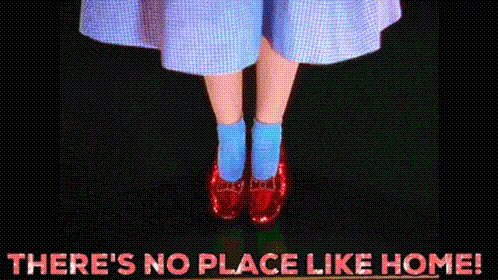How It Went Down: The Judy Garland Ruby Slipper Theft
“Terry got to work casing the museum, meaning looking for the perfect way to steal the slippers. In short order, he found a major weakness in the museum’s security: only a single, small enclosure protected the slippers, and worse, they were on display within an arm’s length of an emergency exit. The job felt almost too easy. A prototypical snatch-and-grab. Terry relayed this information to his associate, who greenlighted Terry’s plan. Terry stole the slippers on the evening of August 27, 2005. He waited until the museum closed and the parking lot emptied, and then went to work. He entered the museum “by breaking a hole in the glass window section” of an exterior door. He then “broke into the plexiglass enclosure, in which the slippers were displayed,” took them, “and left.” He accidentally left a single red sequin at the scene, but no fingerprints or other identifying marks. Just like that, the job was complete.
Slippers in tow, the issue now was how to unload them. It was obviously impossible to simply sell the rubies to a jewel wholesaler, so Terry instead had to use a “fence”—someone who dealt in buying and selling stolen goods. The plan was to keep the slippers at Terry’s home long enough for the fence to arrive, the fence would examine and value the rubies, and then the fence would take the rubies and sell them. The whole thing lasted less than 48 hours, meaning Terry possessed the slippers for just under two days. That’s because when the fence arrived, he delivered a crushing blow to Terry: the rubies on the slippers were not real; they were replicas. Meaning they were worthless. Unaware of the cultural significance and value of the slippers themselves, Terry angrily decided to simply cut his losses and move on. He gave the slippers to the associate who had recruited him for the job and told the man that he never wanted to see them again.“

Update Given on ‘The Wizard of Oz’ Remake, Promises To Modernize the Classic Film
“The original ‘Wizard of Oz’ took place during the Great Depression and it was about self-reliance and what people were going through,” Barris said. “I think this is the perfect time to switch the characters and talk about what someone imagines their life could be. It’s ultimately a hero’s journey, someone thinks something’s better than where they’re at, and they go and realize that where they’re at is where they should be. I want people to be proud and happy about where they’re from. But I want the world to take a look at it and I hope that will come through.”
Remembering Syfy’s Wild, Ambitious Wizard Of Oz Miniseries Tin Man
The world building is at its best in the smallest details, especially when it comes to character creation and costumes. Tin Man won a 2008 Emmy (after racking up nine total nominations) for best non-prosthetic TV-movie makeup, a feat that’s easy to grasp once you’ve seen the obvious creative care that went into adorning even its most ancillary characters. From carnival dancers to a creepy cave witch to the flying “mobat” minions that serve as this series’ version of Oz’s winged monkeys, it’s a marvel to look at, even when the leisurely story paces by at an unhurried stroll.
Tin Man is also far more mature and, at times, even violent than its ruby-slipperred big-screen predecessor. People get shot, shocked, stabbed, sliced, and bludgeoned to bloody pulps, in between the occasional flurry of four-letter words and mildly racy scenes. The horror moments are sparse but effective when they come; that aforementioned cave witch provides one of the series’ biggest jump scares, alongside some genuinely devastating freaky deeds from the tips of the evil Azkadellia’s magic fingers.

